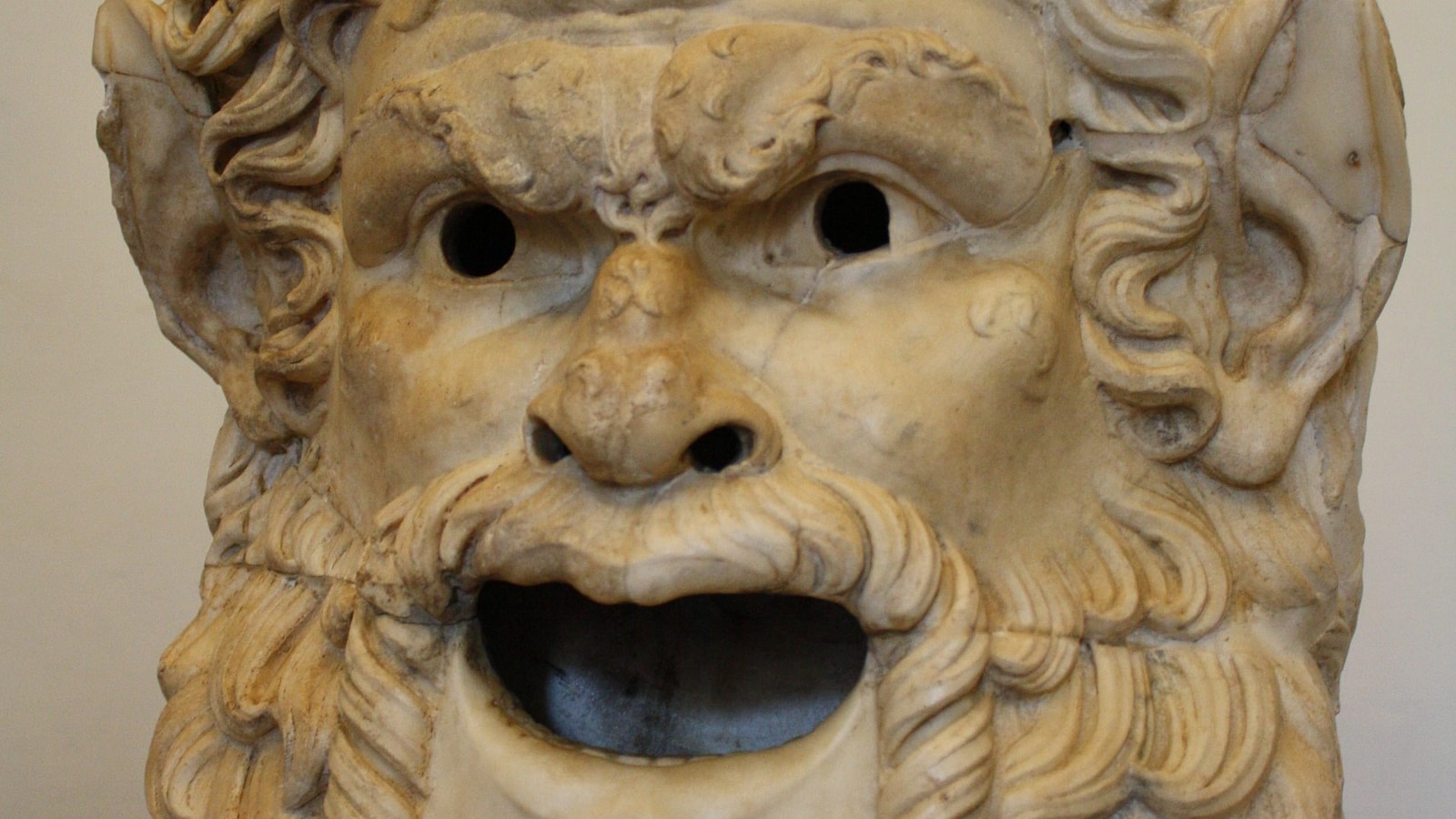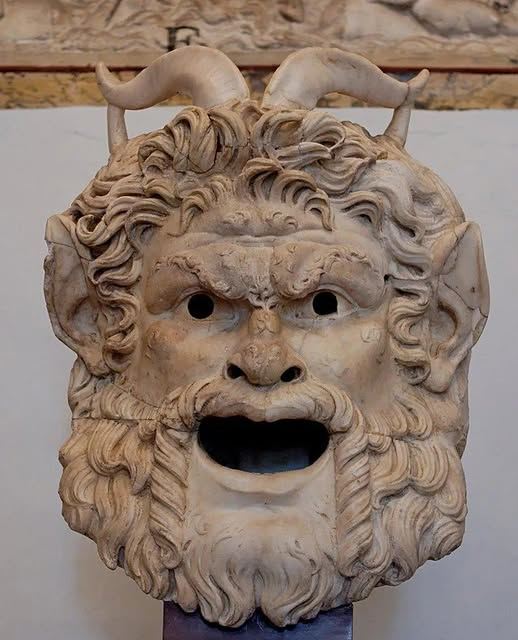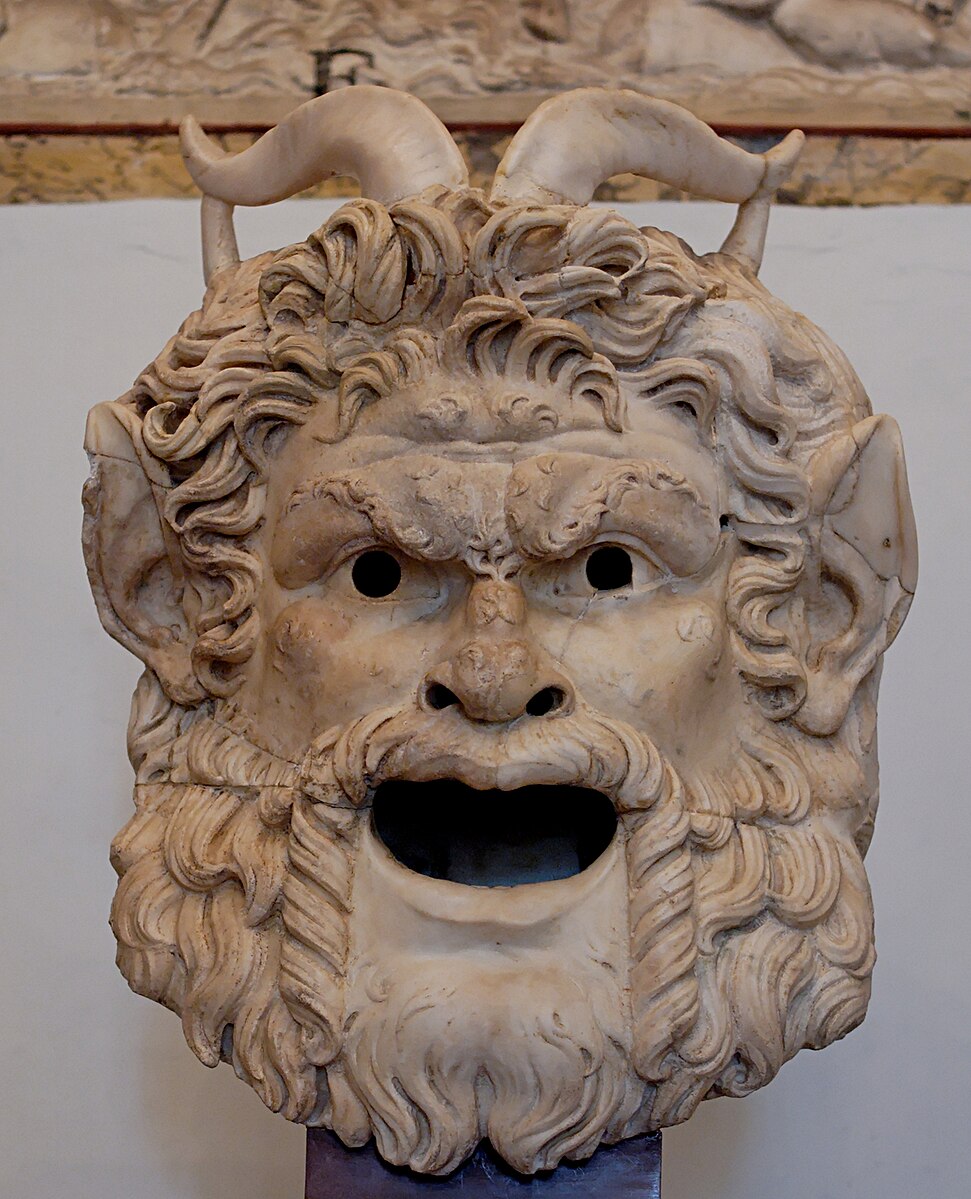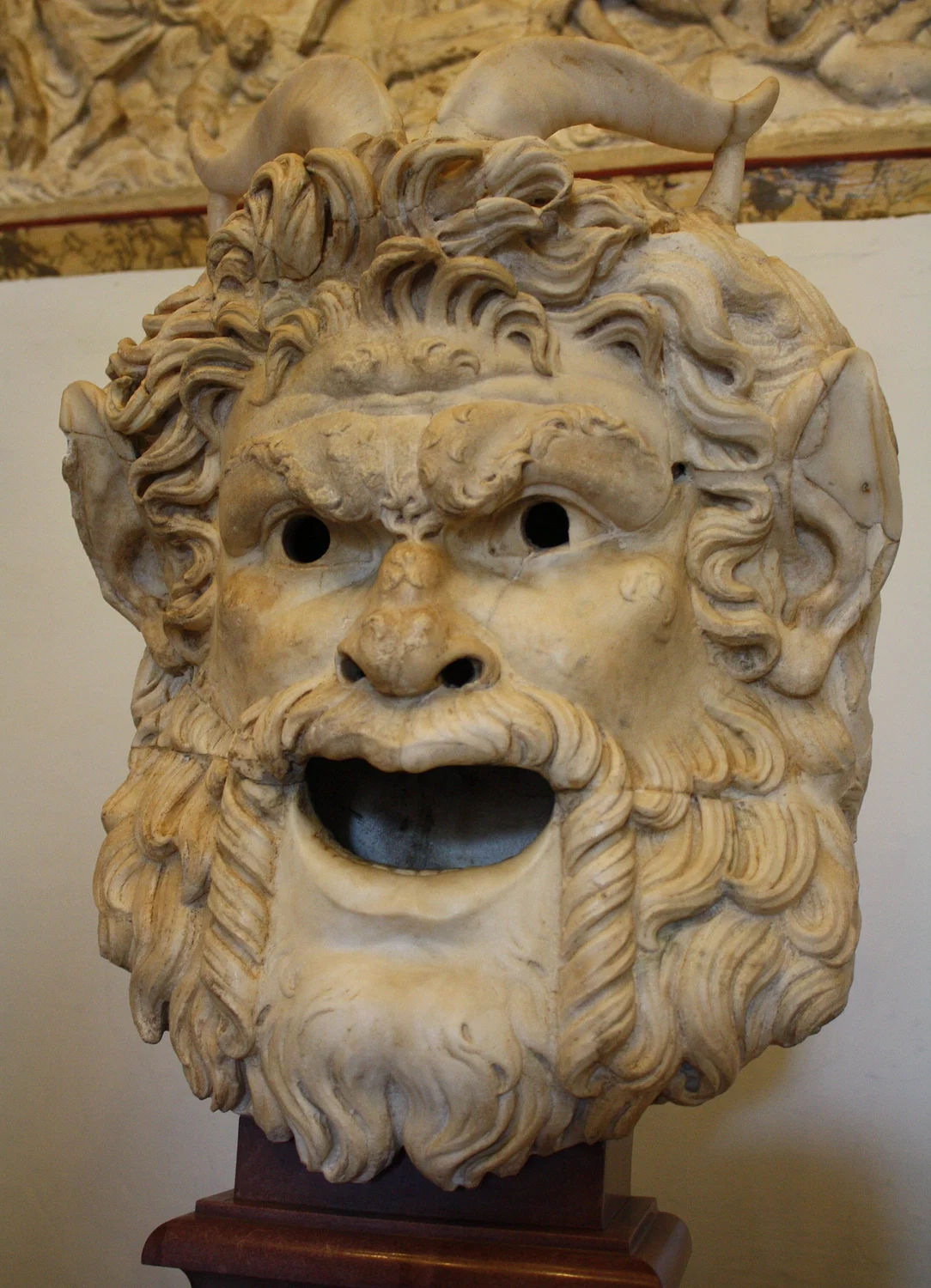Roman Satyr Mask

This marble mask, dating to the 2nd century CE, depicts a satyr—a mischievous, half-human, half-goat figure from Roman mythology.

The Roman Satyr is a captivating representation of the mythological woodland creature known for its playful, mischievous nature. Typically depicted with the features of a human fused with those of a goat—such as pointed ears, horns, and a tail—Satyrs were associated with Dionysian revelry, music, and dance.

Roman sculptors often portrayed them in dynamic poses, sometimes playing musical instruments like the pan flute or engaging in lighthearted antics, reflecting the Romans’ admiration for Greek mythology and artistic traditions.

Crafted in marble or bronze, these sculptures not only showcase the technical skill of Roman artisans but also reveal the cultural fascination with myth, humor, and the natural world. Today, Roman Satyr statues serve as a window into ancient beliefs, artistic excellence, and the enduring influence of mythology on Roman society.











